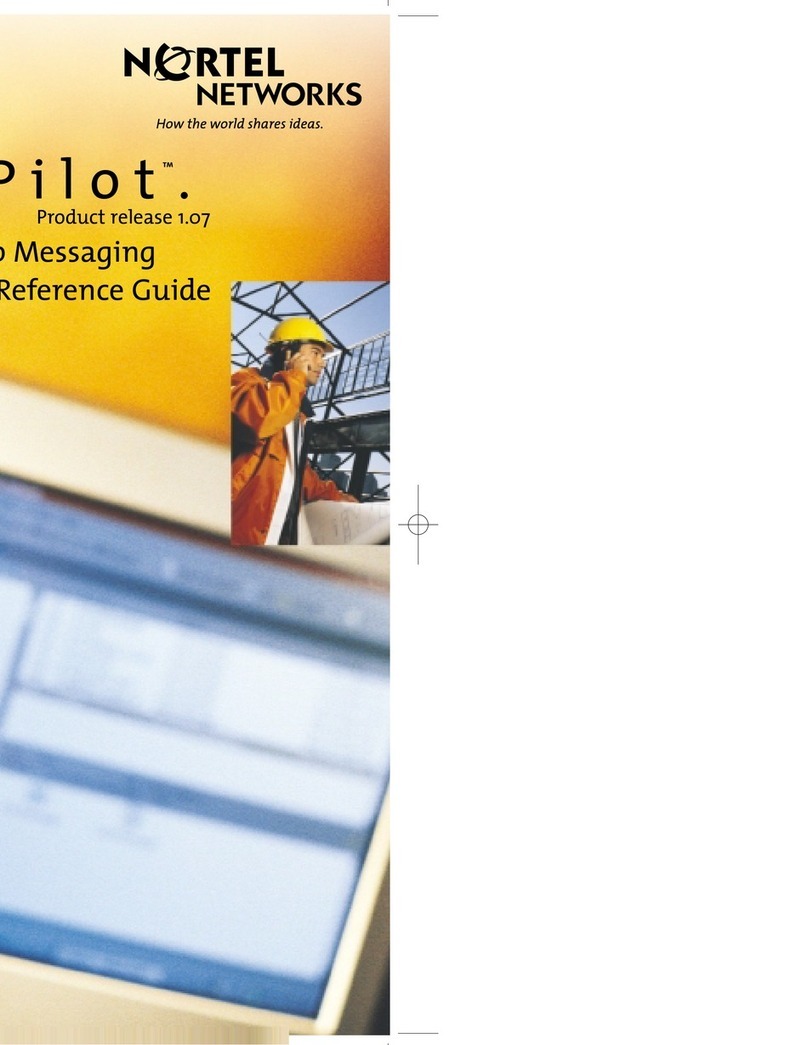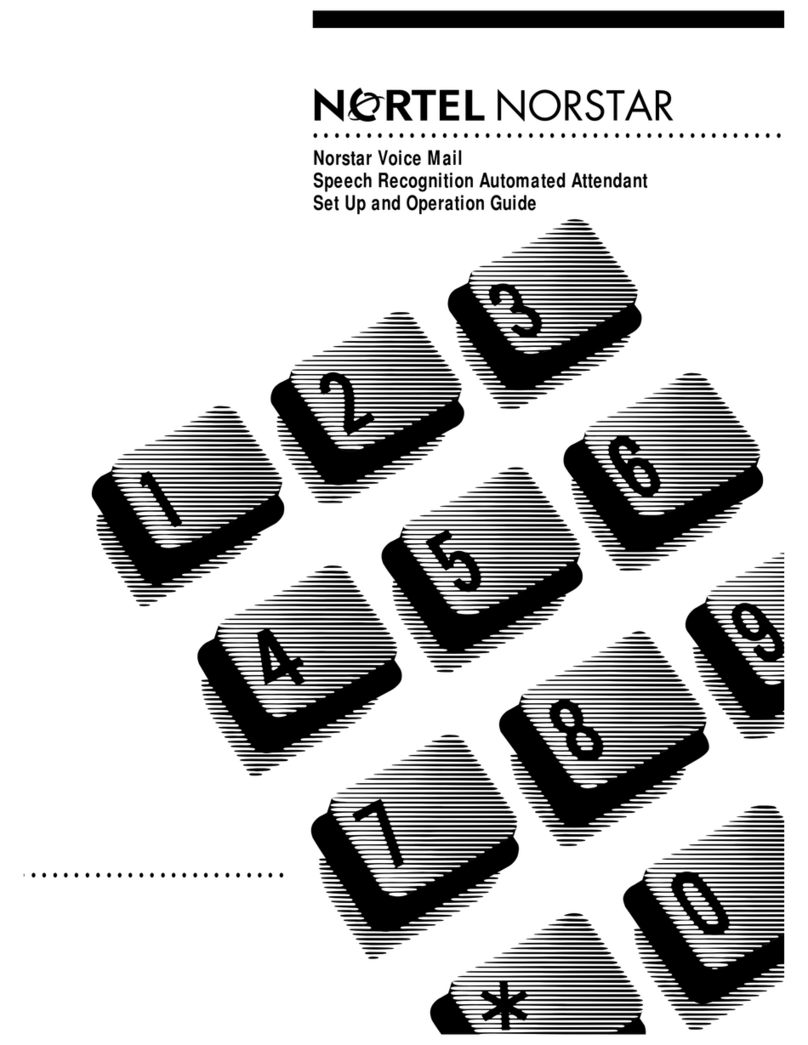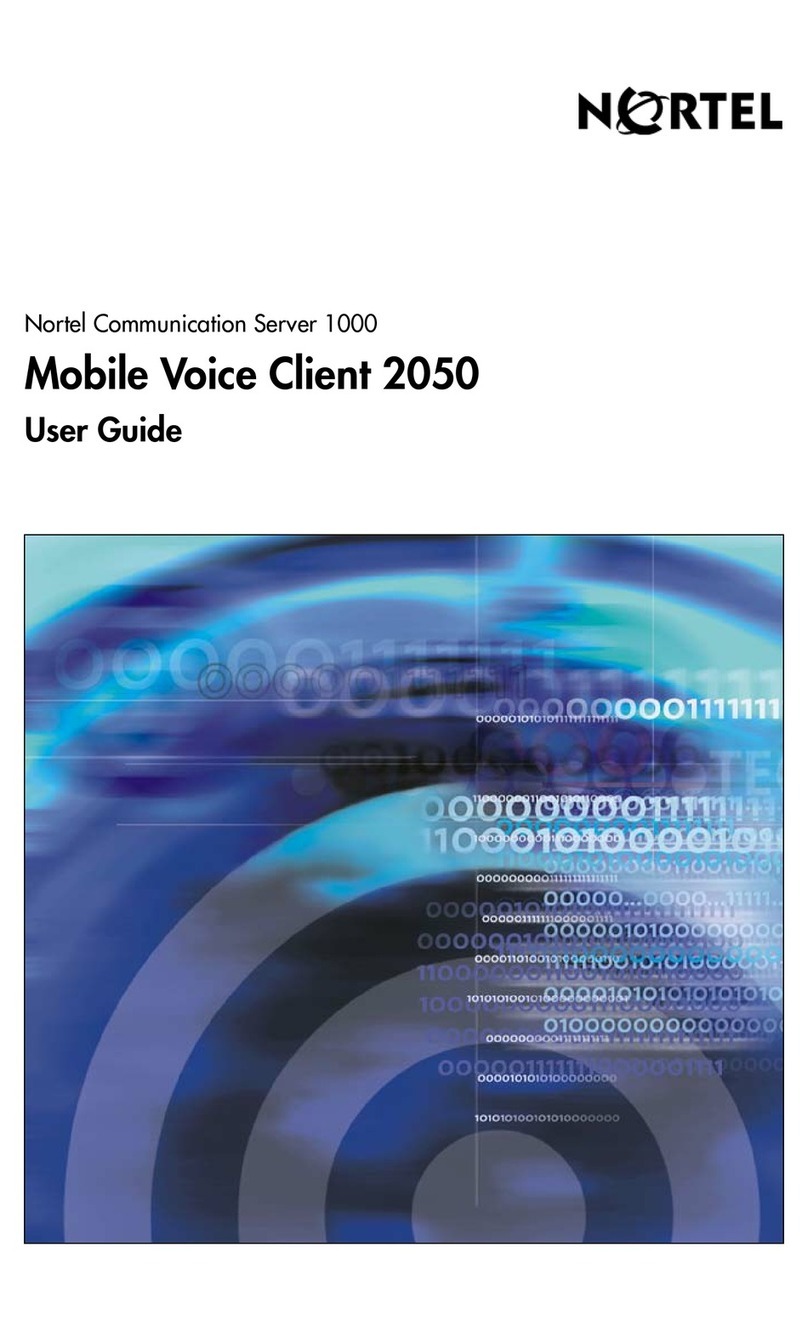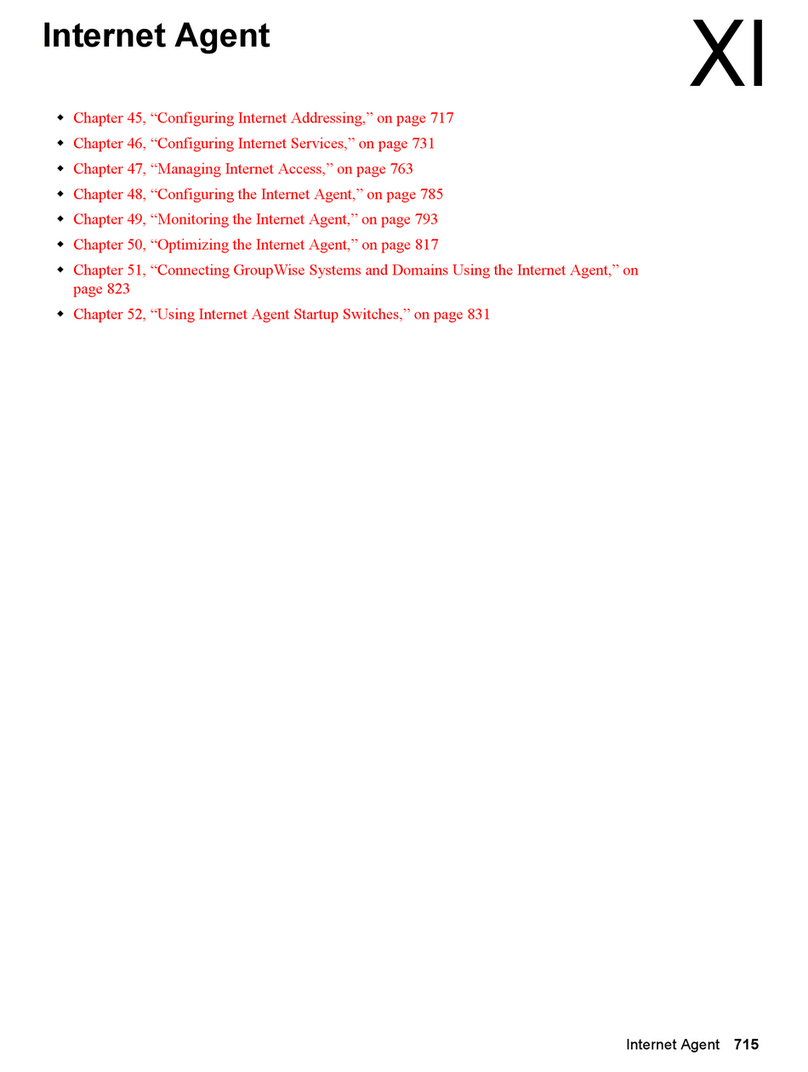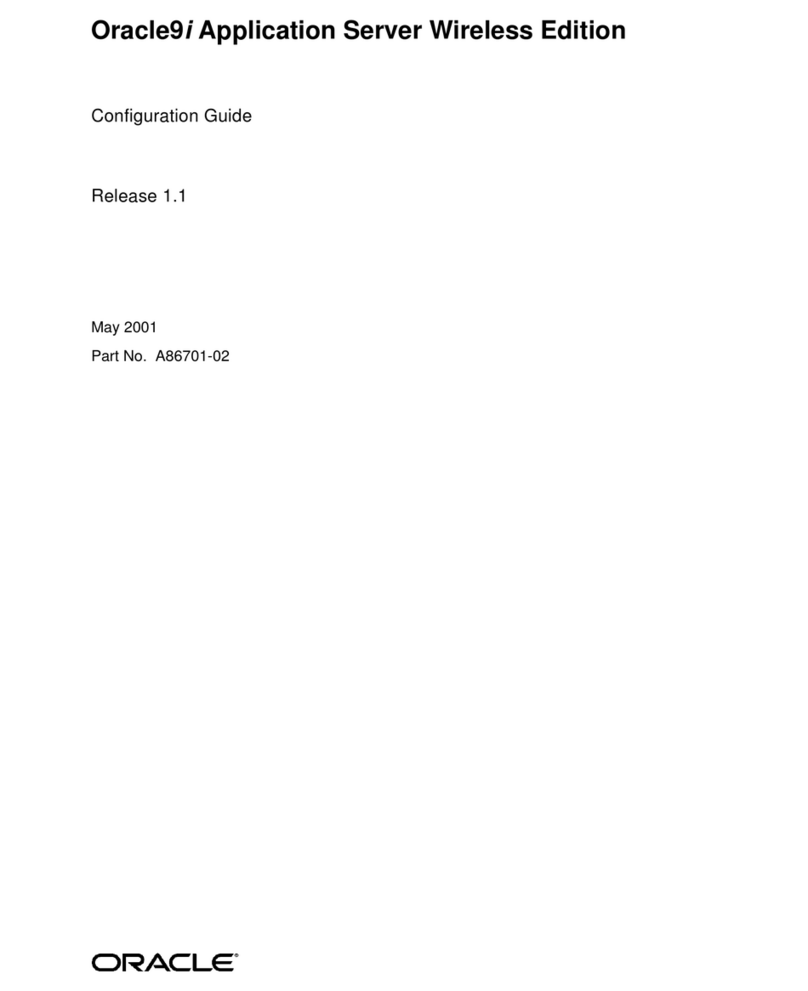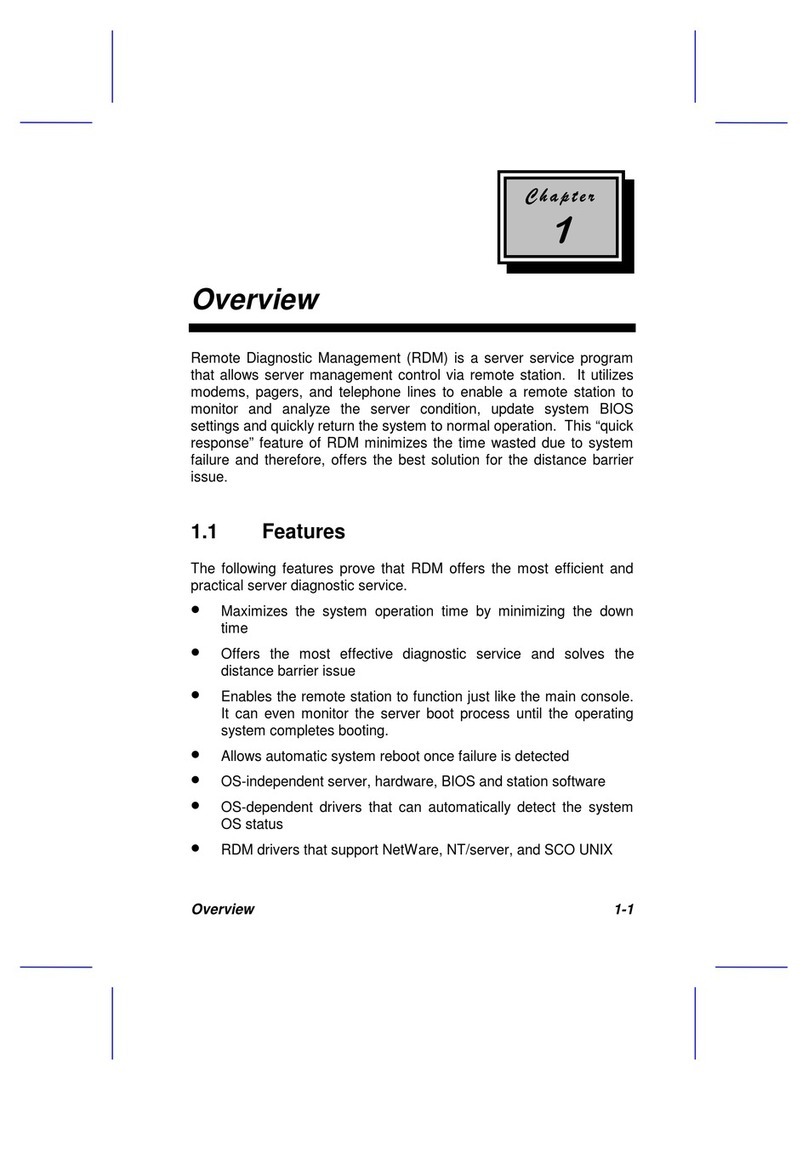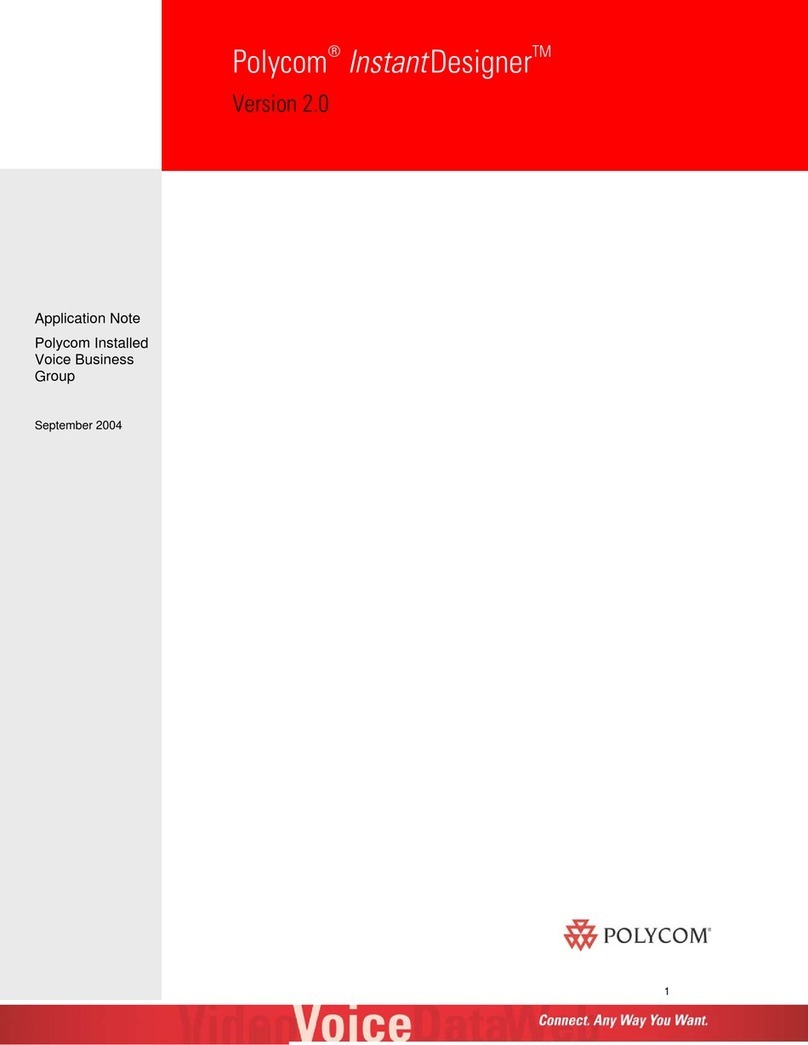Nortel 2070 Quick guide
Other Nortel Software manuals
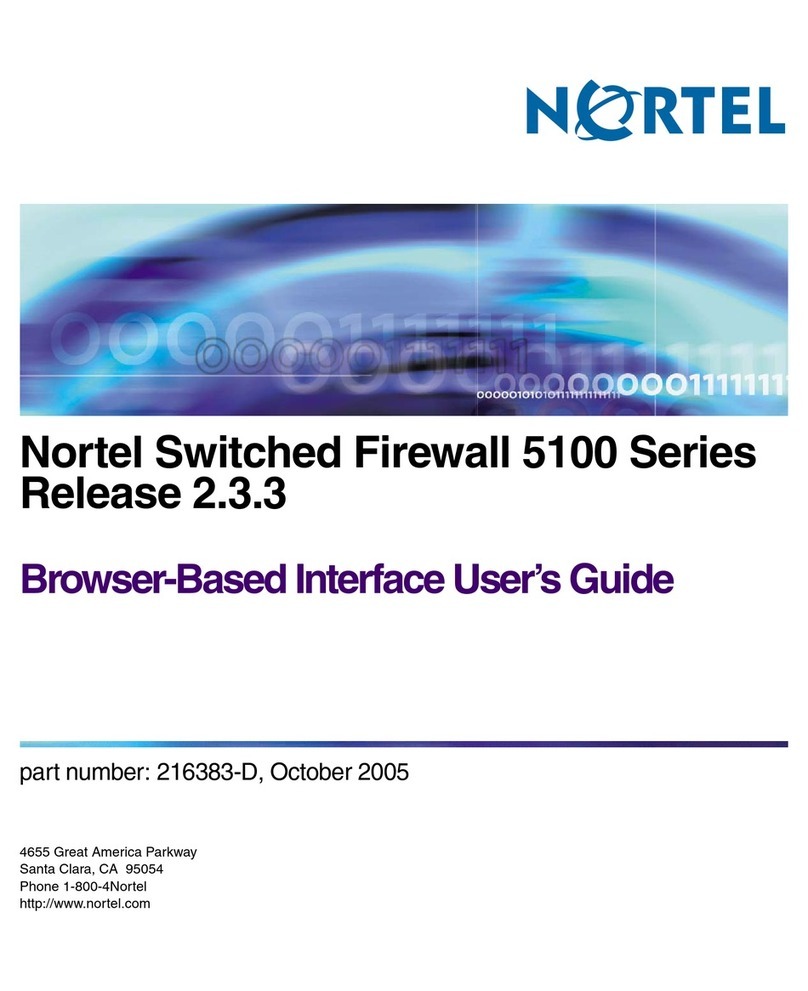
Nortel
Nortel 5100 Series Release 2.3.3 User manual
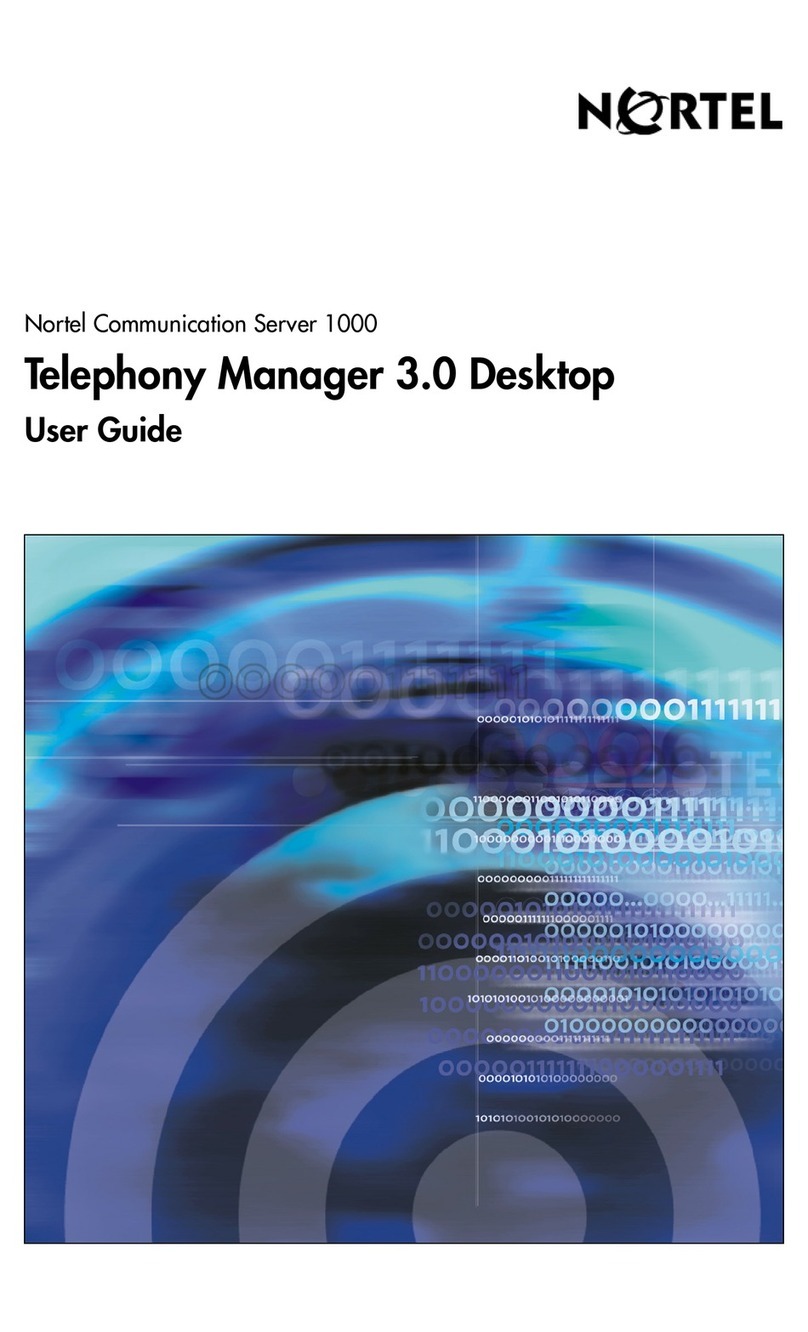
Nortel
Nortel Telephony Manager User manual

Nortel
Nortel TAPI User manual
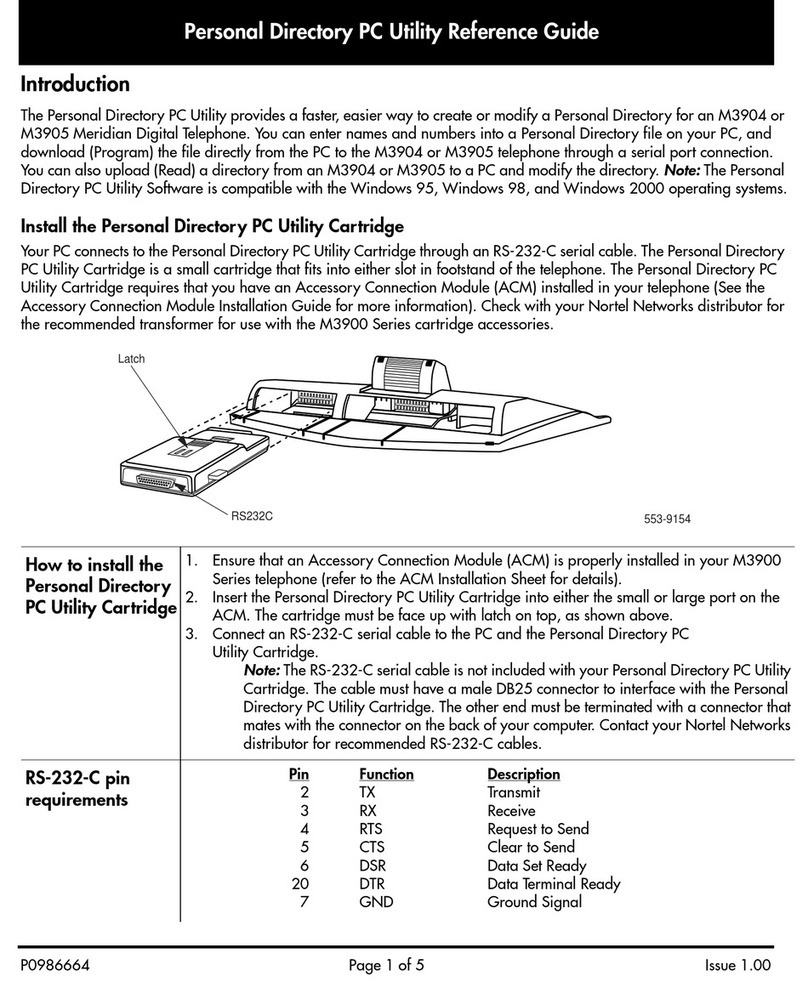
Nortel
Nortel m3900 series User manual
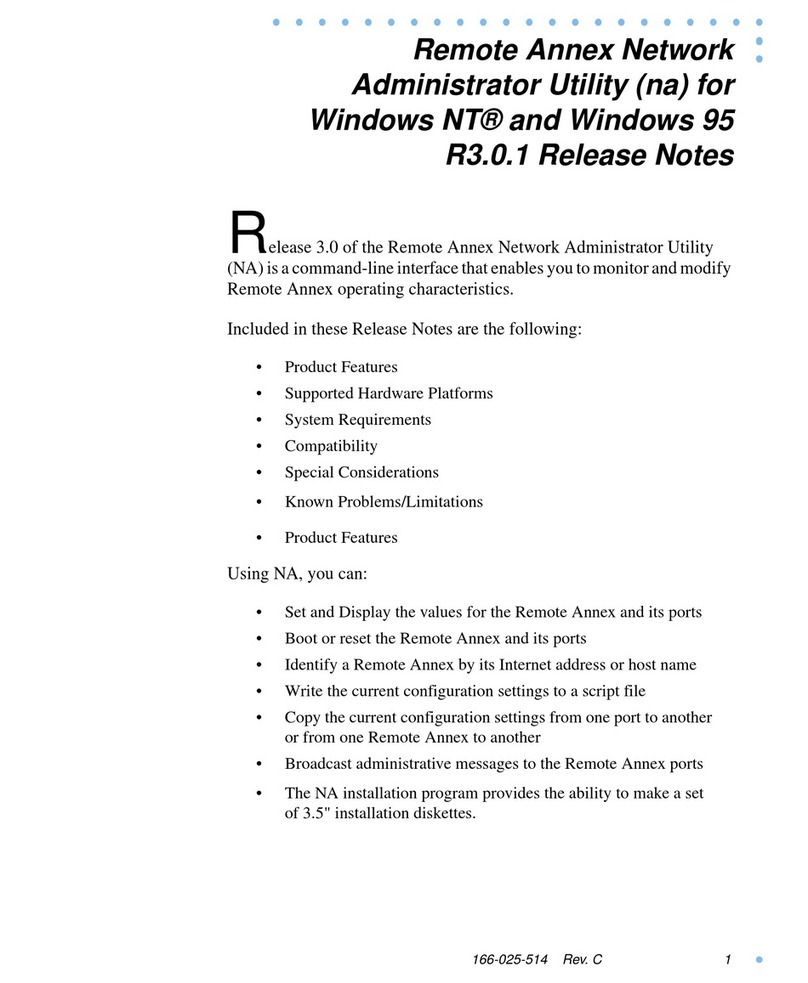
Nortel
Nortel NA Operation manual
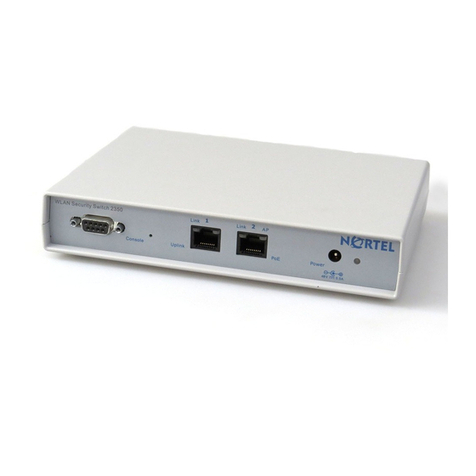
Nortel
Nortel 2350 User manual
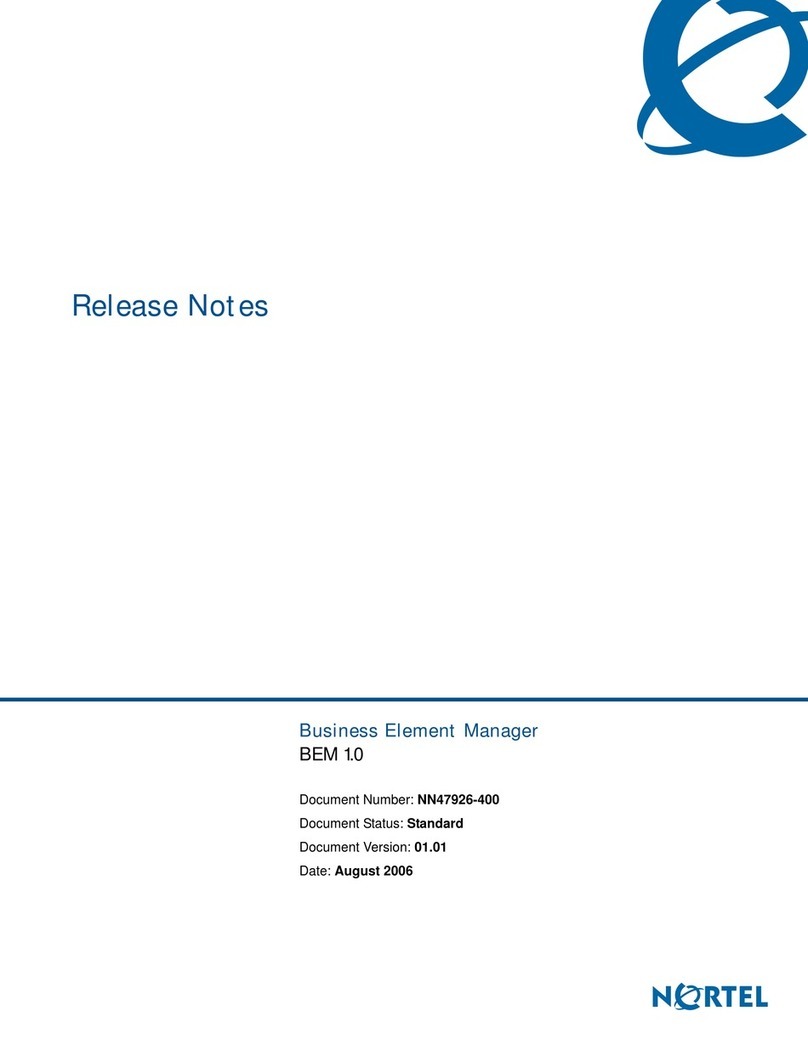
Nortel
Nortel BEM 10 Instruction Manual

Nortel
Nortel BCM200 Quick setup guide

Nortel
Nortel CC MIS Instruction Manual
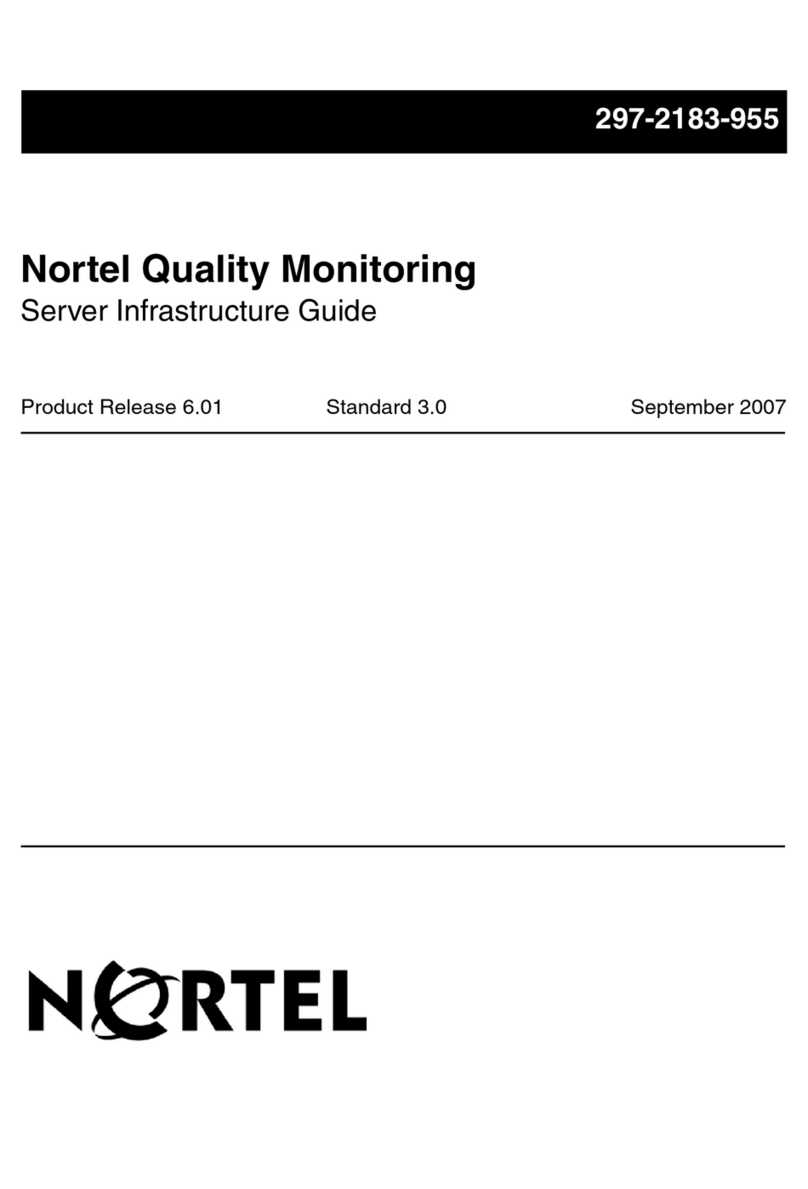
Nortel
Nortel Quality Monitoring User manual

Nortel
Nortel INM 5.0 User manual
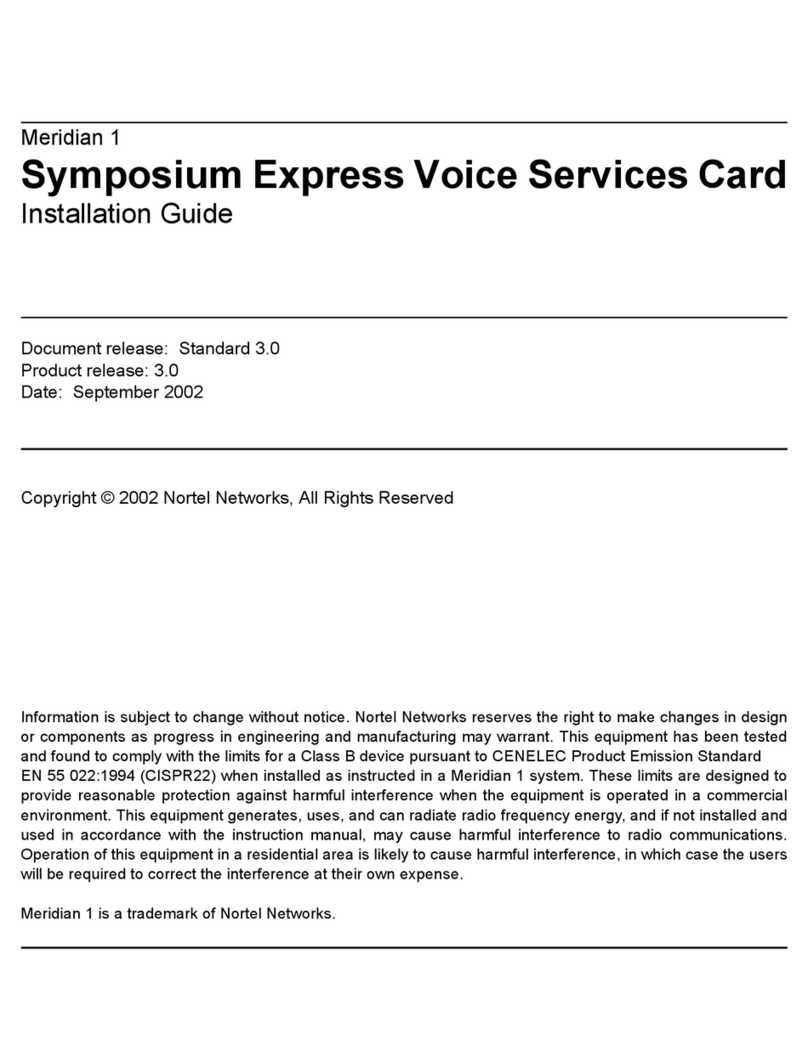
Nortel
Nortel Express User manual
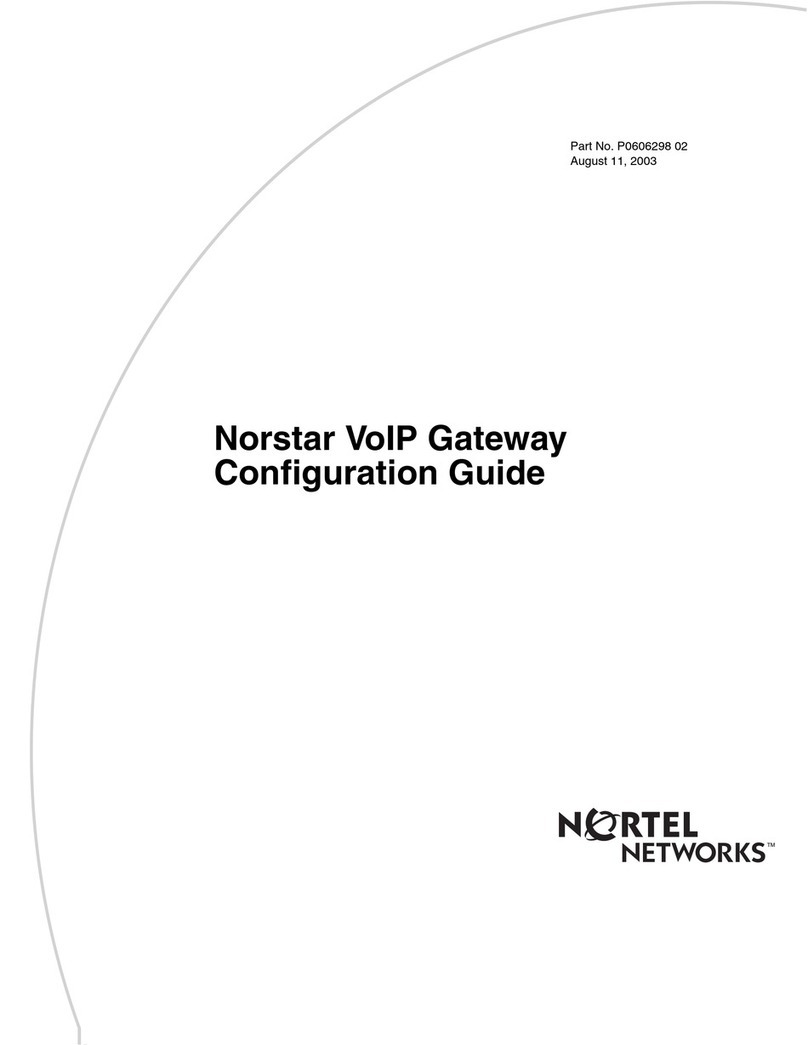
Nortel
Nortel VoIP Gateway User manual
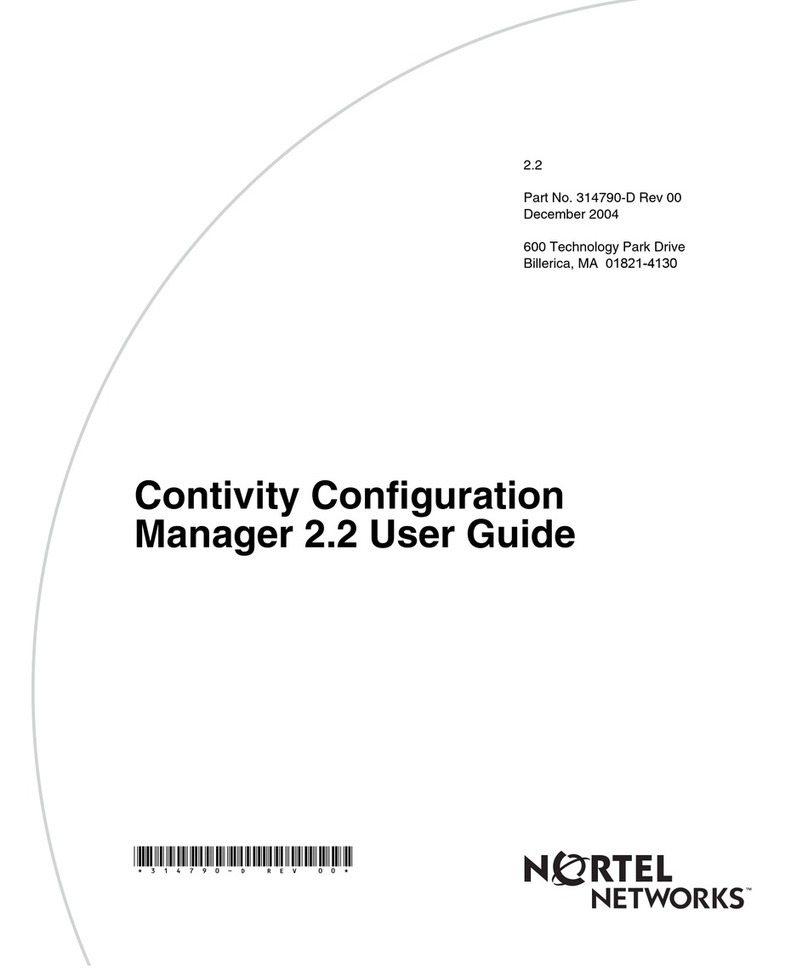
Nortel
Nortel Configuration Manager Quick guide
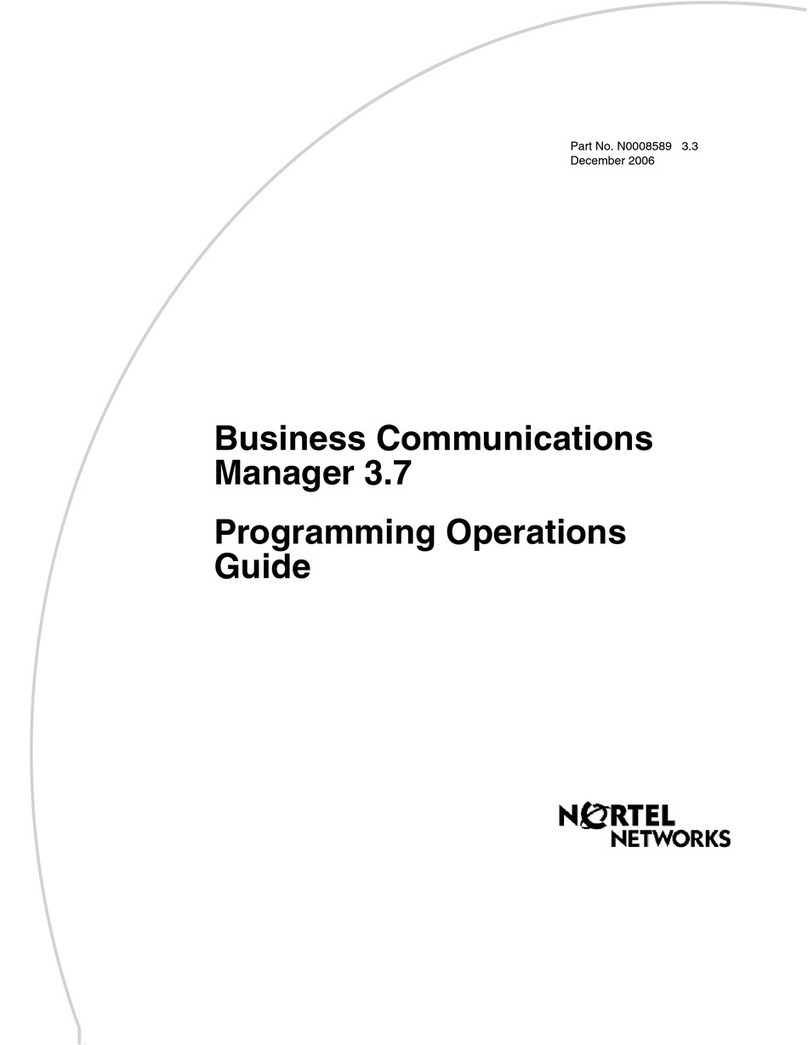
Nortel
Nortel BCM 3.7 User manual
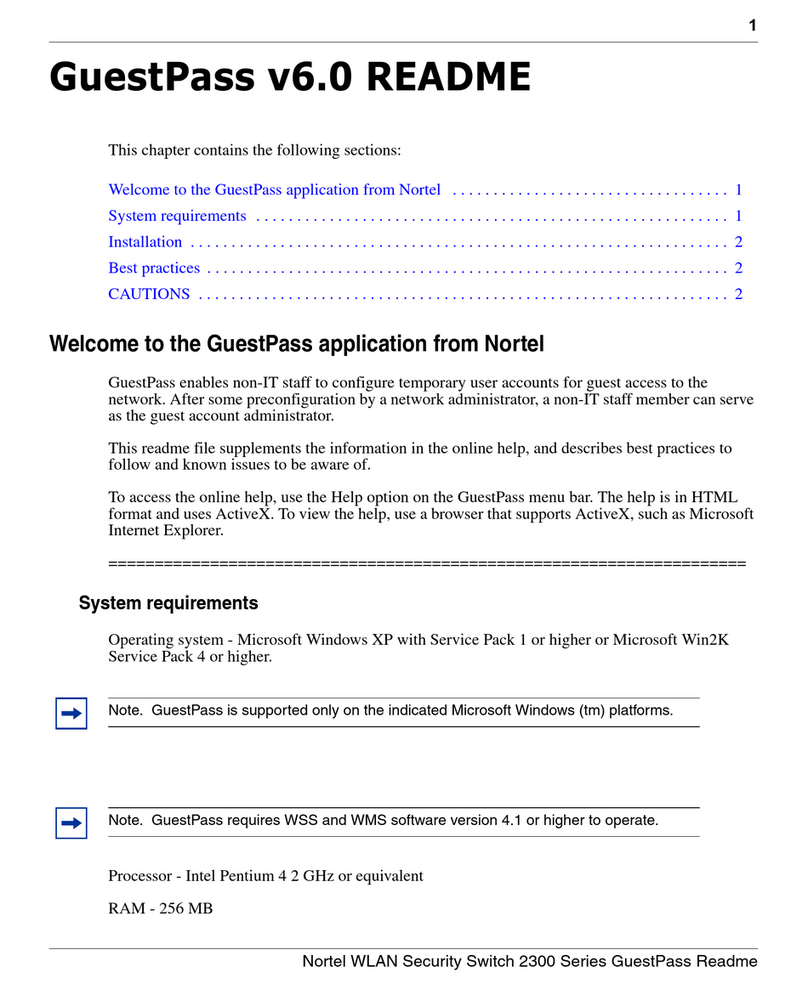
Nortel
Nortel 2350 Instruction sheet
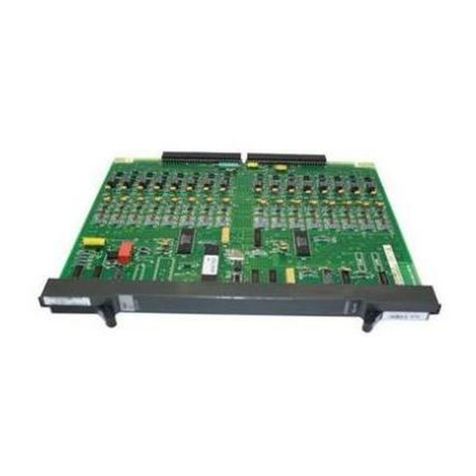
Nortel
Nortel Passport 4400 Guide
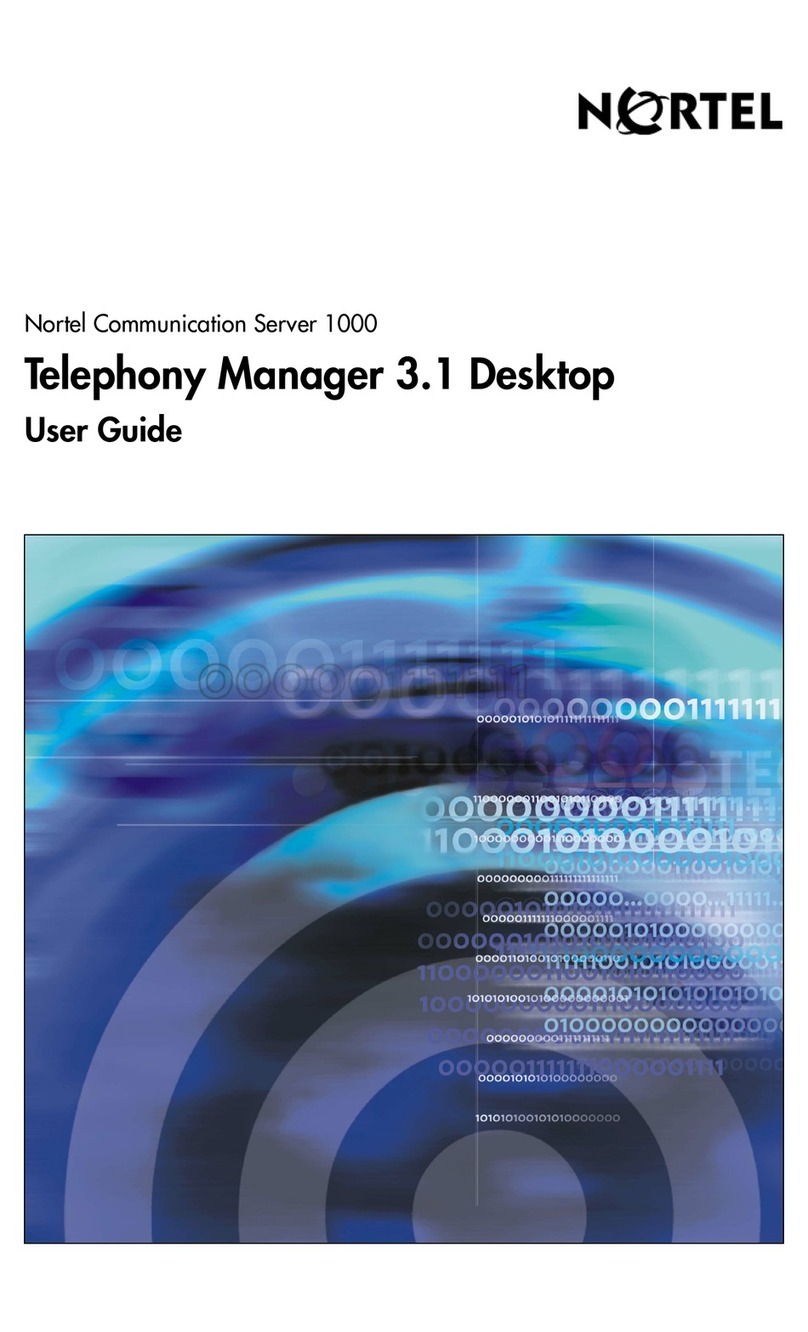
Nortel
Nortel Manager User manual

Nortel
Nortel CallPilot 2.0 User manual
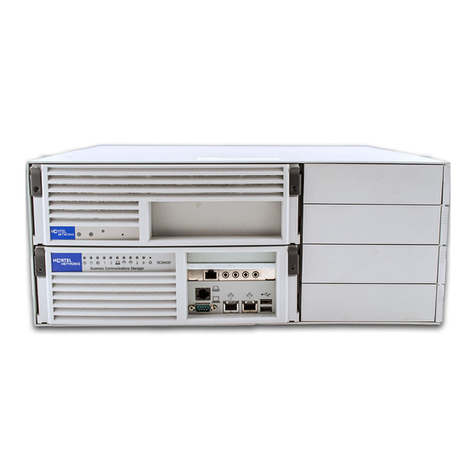
Nortel
Nortel BCM 4.0 Installation and operation manual
Popular Software manuals by other brands

Garmin
Garmin 010-10844-00 - Mobile XT - GPS Software null

COMPRO
COMPRO COMPROFM manual

Muratec
Muratec OFFICEBRIDGE ONLINE user guide

Oracle
Oracle Contact Center Anywhere 8.1 installation guide
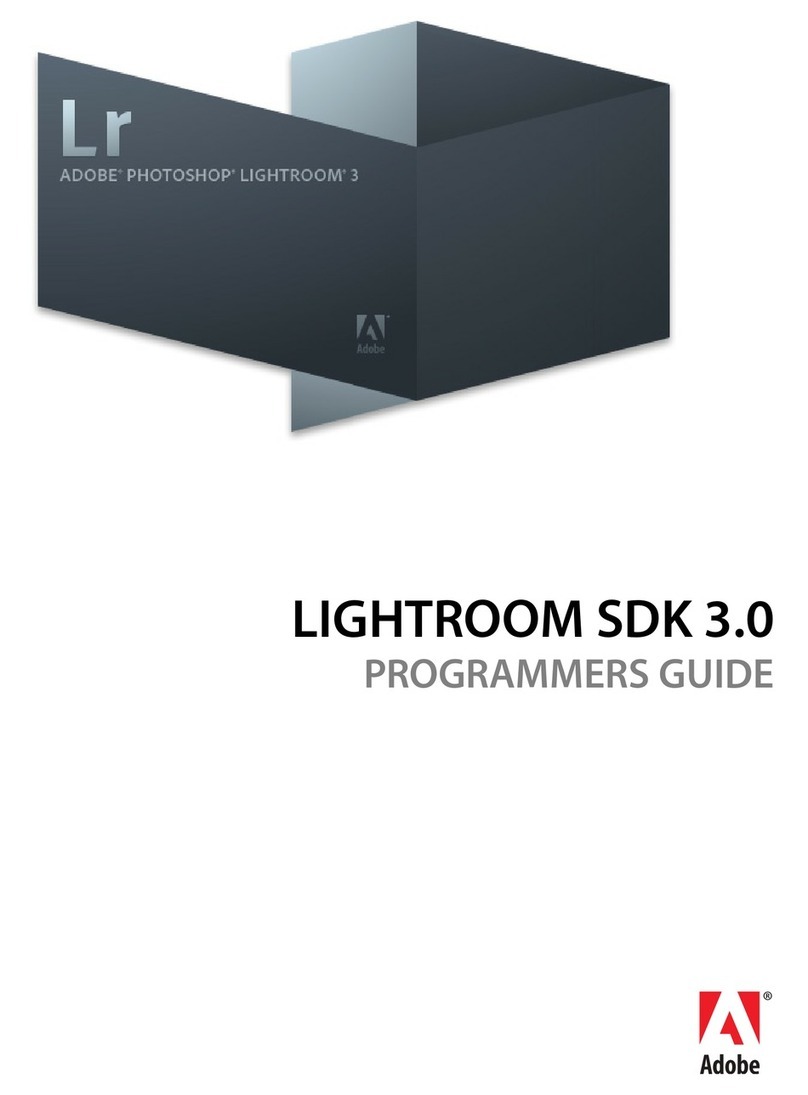
Adobe
Adobe 65007312 - Photoshop Lightroom Programmer's guide

Avaya
Avaya NULL One-X for RIM Blackberry user guide
